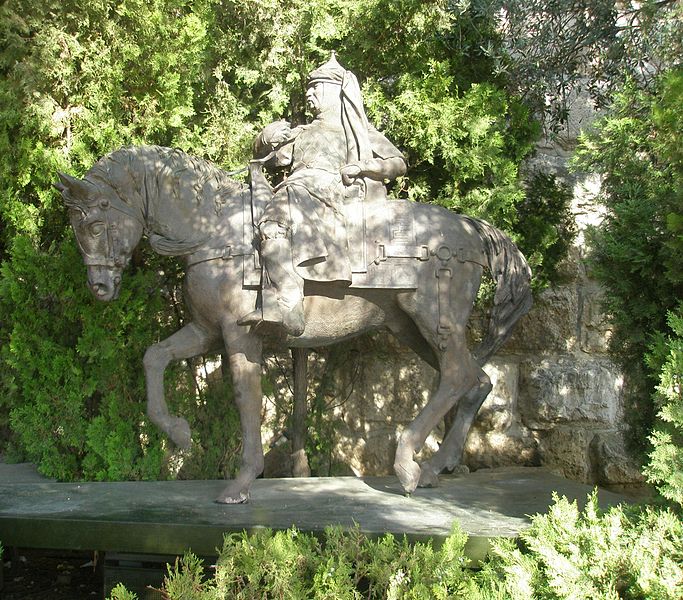
(Wikimedia Commons)
Further notes from Michael Bonner, Jihad in Islamic History: Doctrines and Practice (Princeton and Oxford: Princeton University Press, 2006):
Meanwhile [in the late-nineteenth and twentieth centuries], thinkers in several countries began to take a new look at the jihad, as they contemplated the place of Islam, and especially of Islamic law, within their societies. In India under British rule, where Muslims constituted a large minority, several reformers, of whom the most famous was Sayyid Ahmad Khan, revised the classic doctrine. Jihad, they said, could only be allowed in cases of outright oppression, or of obstruction of the practices of the faith. Since the British guaranteed religious liberty, Indian Muslims were under no obligation to rebel against them. For Sayyid Ahmad, the goal was a modern or modernizing Islam. Why had the Muslims fallen behind? The basis for progress and modernity had already been present in the earliest Islam: indeed, Europeans in the Middle Ages had borrowed heavily from the Muslims as they developed their own science and technology. However, centuries of decline had caused the Muslims to neglect their own heritage, which they now needed to borrow back again. If jihad had any role in all this, it was a liberal version of the old “internal” jihad: the Muslims must strive to achieve, or to recover, their own authentic modernity. (159-160)
One thing that I’ve noticed about many of those who like to denounce Muhammad and Islam as incorrigibly bloodthirsty and oppressive is that they often don’t seem to realize that the premodern world was almost perpetually in a state of either war or pending war. And that wasn’t true only in the Middle East. (Europe isn’t dotted with castles because medieval Europeans were eagerly seeking to create scenic views and tourist attractions. And knights weren’t merely picturesque and vaguely romantic; they were very often actually fighting.) Islam didn’t erupt into a world where everybody else had been sitting around the campfire holding hands and singing “Kumbaya.” One of the reasons that the seventh-century Arab conquests were so spectacularly successful is that the Byzantine and Sassanid Persian empires — the two “Great Powers” of late antiquity, respectively Christian and Zoroastrian — had just fought themselves to exhaustion in a war that had lasted for roughly three decades.
Thus, the sorts of military activities that were more or less normal everywhere during the first centuries after the rise of Islam seem aberrant and even abhorrent to many critics of Islam today — but setting those activities within the broader historical context would, I think, help considerably. Anyway, reasonable modern Muslim thinkers have recognized the changes that have come in the modern world, as Michael Bonner (a leading expert on Islamic history, and particularly on the history and doctrine of jihad, who was born in France but who now teaches at the University of Michigan) explains:
No longer is war the normal condition, interrupted — at the discretion of the Muslim authorities — only by truce or conquest. Instead the prevailing condition is peace, interrupted only by invasion or some other violation of sovereignty. (161)















